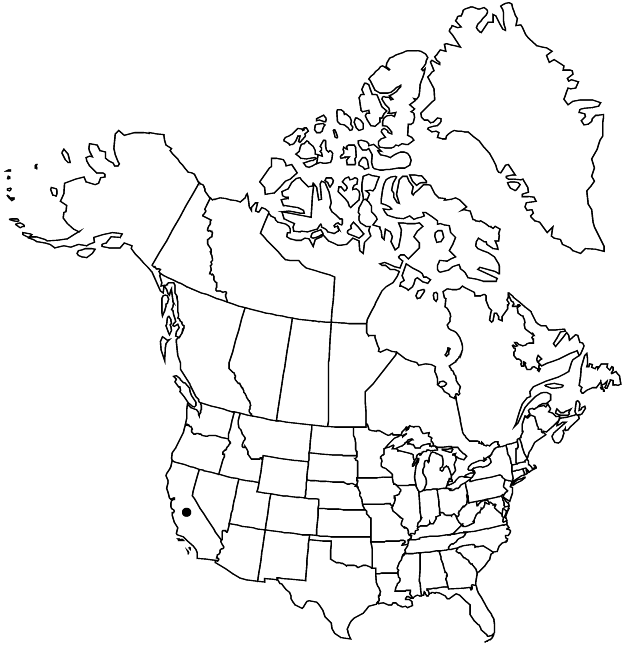Limonium otolepis
Revis. Gen. Pl. 2: 396. 1891.
Leaves in basal rosettes and on inflorescence axes, leaves in rosettes dead before anthesis; petiole 3–8 cm, ± equaling blade; blade obovate to oblong, 3–8 × 1.5–3 cm, base tapered, margins ± entire, apex unknown, venation not seen; leaves on inflorescence axes sessile, clasping stems, blade ± round, less than 3 cm. Inflorescences: axes not winged, sometimes angled, 40–80+ cm × 2–3 mm, glabrous; nonflowering branches present, especially in proximal part, slender; spikelets densely aggregated at branch tips, internodes 1–2 mm; subtending bracts whitish, 1–2 mm, truncate, surfaces and margins glabrous; flowers 1–2(–3) per spikelet. Flowers: calyx whitish distally, with reddish brown ribs, obconic, proximal 1/2 pilose between and on ribs (hairs 0.2–0.4 mm); tube ± 1.5–2 mm; lobes 0.5–0.7 × 0.5–0.7 mm; petals blue to whitish, ca. 0.5 mm, exceeding tube. Utricles 1–2 mm. 2n = 18.
Phenology: Flowering Sep–Feb.
Habitat: Disturbed coastal and urban areas, especially salt marshes, roadsides
Elevation: 0-100 m
Distribution

Introduced; Calif., w, c Asia.
Discussion
The name Limonium perfoliatum (Karelin ex Boissier) Kuntze, usually now treated as a synonym of L. reniforme (Girard) Linczevski, was misapplied to this species by J. T. Howell et al. (1958) and P. A. Munz (1968).
Selected References
None.